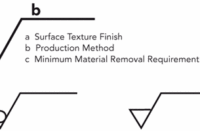There is a big hairy monster lurking around your business. He’s not easy to detect and he has a real nasty habit of stealing from you. The monster I speak of is called “slack” and if you don’t kill him, he will eventually have an irreversible impact on your bottom line.
Slack is simply another word for waste and inefficiency, particularly in the supplier-customer relationship within the vertical supply chain. He can surprise you at just about any point and manifest himself in numerous ways. Mis-specified purchase orders. Employee accidents. Wasted product. Slack can be just about anywhere.
To better understand how to contain such a beast, we must first understand the nature of a vertical supply chain.
The supply chain is a system of firms, people, technologies, resources and activities, all of which are involved in moving a good (or service) from the raw-material supplier down to the consumer. Think of your installation business as one of several steppingstones in the proverbial path that a product takes from the supplier to the property owners. This process essentially converts raw ingredients into a finished product that is delivered to your customers, the property owner. Whether you recognize it or not, you are one of several intermediaries that participate in this process.
The interaction and exchange between a supplier and customer is a breeding ground for slack.
One of the main purposes of an intermediary is to break down bulk. Manufacturers such as my company, NewLook International, purchase large volumes of raw materials and then combine them with other raw ingredients to produce a finished product. Distributors and retailers stock relatively high volumes of the finished product so you, the decorative concrete contractor, and your counterparts don’t have to purchase high volumes when you only need a few units.
When each member of the supply chain honors their proper role, economies of scale are advantageous. However, those intermediaries who complicate things compromise what should be a mutually beneficial supplier-customer relationship.
Consider the specialty concrete distributor who chooses to promote a wide range of product solutions. This is not necessarily a bad thing. In fact, it may be appropriate for some markets that demand a broader range of solutions. But their cash flow may not allow them to stock sufficient amounts of everything in their wide range to meet the needs of a small niche market like decorative concrete work. As a result, the distributor’s cost per unit would typically go up. And when a distributor has to pay a premium, they usually pass those premiums on to you. In fact, premium prices are often indicative of inefficiency in the supply chain — slack.
Slack rears his ugly head in many other ways. You can smell him when a customer mis-specifies an order or changes their mind about a color at the last minute. You can hear him when your installation crew causes scrap or rework. You can see him when your advertising campaign does not yield new job prospects. And you can feel him breathing down your neck when your distributor puts off submitting a PO to the manufacturer. Slack is everywhere and he reeks of profit loss.
Ways to reduce slack
Tell slack to take a hike by aligning incentives that motivate all players in the supply chain to reduce waste. Your employees, for example, can be motivated by linking their pay to low slack. This may be a bonus or some type of attaboy that is important to your workers.
One of my NewLook’s Certified Installers, for example, rewards his installation crew with movie tickets for every 10 successful projects they complete without error or lost-time accidents. This has helped to eliminate unnecessary scrap, waste and rework.
Develop programs for your installation crew that emphasize safety. This can help reduce lost-time accidents, which will have a direct impact on both your top and bottom line.
Programs that offer buyers and sellers incentives to reduce or eliminate slack are also important. Your distributor wants large-order quantities and advance notice. In addition to discounted pricing, you want undamaged product made available in a timely manner. When an agreement with ironclad purchasing terms is in place — one that accommodates both your needs and the needs of your distributor — you establish efficiency in the supplier-customer relationship and prevent slack from causing unnecessary damage to your bottom line.
There are any number of programs and initiatives that will help minimize slack and increase efficiency within the supply chain. Here are several more examples.
Monitoring your mileage to and from job sites can help identify wasted gas and inefficient use of time, both of which negatively impact profitability.
Participating in manufacturer trainings and demonstrations can give you the product knowledge needed to select the appropriate solution for your jobs. Imagine how much money you’d lose if you constantly suggested the wrong products to all your customers. This will also prevent you from wasting time waiting for replacement product.
Employee performance reviews can give your team a positive direction and keep them from losing the much-needed focus that drives growth.
Processing employee background checks and interviewing employee references can help reduce turnover and minimize liabilities.
Taking trade references seriously can also minimize slack. Doing business with customers with healthy credit histories can keep your accounts receivables and accounts payables in balance.
Finally, developing measurable marketing campaigns leads to greater confidence in a return on your marketing investments.















